Introduction
This napping method is napping even when not tired, but for psychological benefits such as restorative effects1. These individuals also appetitively nap without any relation to sleep needs2, but rather as a routine. Because of the nature of this napping behavior, short appetitive naps (~20 minutes) contain mostly NREM1 because of low sleep pressure. This makes it equivalent to a shuteye under non-reducing biphasic conditions or monophasic sleepers casually taking a nap2.
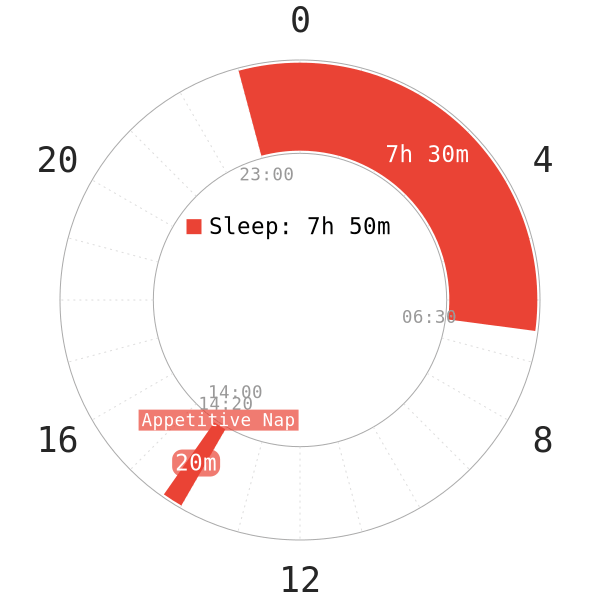
Under these conditions, the appetitive nap is similar to a form of meditation to relax the mind without actual sleep. However, with sufficient napping experience, appetitive napping is a viable method to sustain polyphasic schedules after the adaptation phase. Alternatively, it is also a solid way to retain napping skills between adaptation attempts. Yet, there are certain tangling conditions necessary to make appetitive napping work well.
Appetitive naps in polyphasic sleeping
Mechanics in polyphasic sleep
Appetitive napping in general provides more benefits for adapted/experienced polyphasic sleepers than for non-nappers.
- After the adaptation phase is complete, these polyphasic sleepers can manage to schedule naps outside their base schedule (with some flexibility). They can still fall asleep in the new naps a lot more quickly than non-nappers (e.g, flexible schedules like SEVAMAYL). It is reasonable that adapted/experienced polyphasic sleepers nap better than beginner nappers.
- Appetitive naps have the potential to provide deeper sleep stages if the timing matches with alertness dips, especially under sleep deprivation and high homeostatic pressure.
- However, whether being able to fall asleep at random hours outside the rigid base of the adapted polyphasic schedule is healthy or perpetually tired is inconclusive.
- Napping spontaneously outside the base schedule can be difficult at first. This is because it is part of the flexing adaptation. The naps may be inefficient initially (NREM1 naps) until the napper has adapted to flexing naps.
Benefits of appetitive naps
Despite its nature, results indicated some benefits from appetitive napping behavior.
- Subjective assessment from each experimenter was mostly positive, feeling less tired after each nap2.
- Habitual appetitive nappers also showed consistent sleep onset latency at night and during the daytime naps.
- Based on the EEG results2, appetitive nappers do fall asleep in their naps over time. This is only if the nap is long enough to contain SWS (> 30 minutes).
- Overall, appetitive nappers took 22 minutes to actually fall asleep. However, they managed to get 16 minutes of NREM2 and 16 minutes of SWS in the 60-minute naps.
Once again, it hints that appetitive naps have longer sleep onset latency than scheduled naps on rigid polyphasic schedules. They usually require longer sleep duration to contain deeper sleep stages, thanks to their spontaneous nature.
Appetitive naps and nocturnal sleep
In another study, appetitive nappers were not only able to fall asleep almost anywhere and at different times during the day but also able to fall asleep at night without reducing total sleep. Their night sleep is also not disrupted1. This result supports the previous hypothesis about how at least some experienced polyphasic sleepers appetitively nap. Most importantly, it is also worth noting that appetitive nappers consistently had lower total sleep duration at night than non-nappers on the days they napped1.
- Quite possibly, nocturnal sleep duration in appetitive nappers might automatically slightly reduce over time compared to their monophasic sleep baseline; on the other hand, the total sleep remains consistent with their monophasic baseline when the appetitive nap duration is accounted for.
- Adding a daily nap into a monophasic sleep schedule (to become biphasic sleep) is likely to train sleepers to learn to fall asleep in the nap. However, only non-reducing biphasic sleep was the topic of research in the study.
This opens up the possibility that napping is a skill that can be learned and sleepers will eventually become skilled nappers.
When and when not to appetitively nap on polyphasic schedules
When it is beneficial
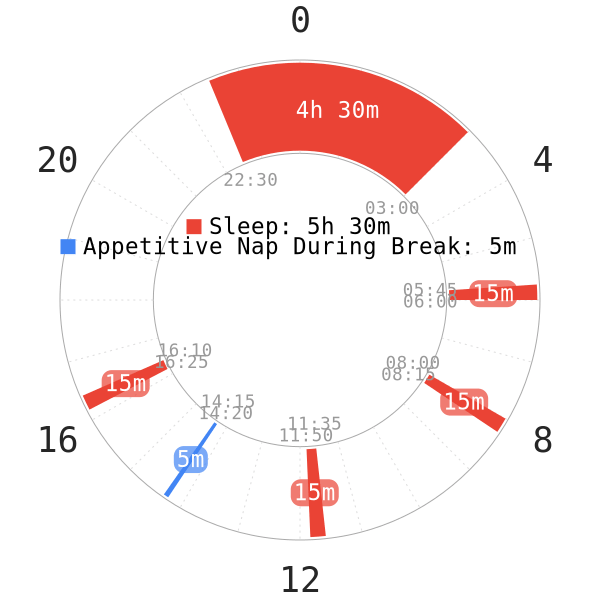
The following scenarios go well with appetitive napping:
- Flexible, non-reducing biphasic and random schedules. New polyphasic sleepers can appetitively nap on these schedules to learn to nap more effectively. Appetitive naps have worked with this specific type of biphasic sleep or sleep patterns that allow napping whenever tired. However, abusing too many appetitive naps can mess with nocturnal sleep.
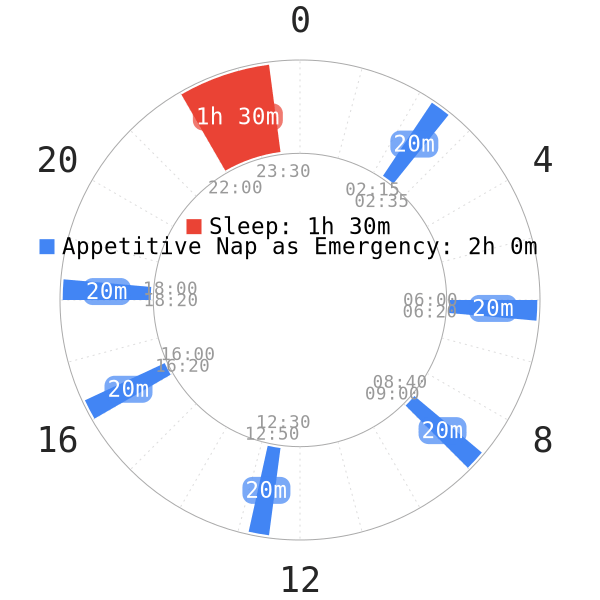
- During emergency situations (e.g, apocalyptic, do-or-die events) that requires extreme sleep cut, appetitive naps can sustain alertness. This is because sleepers do not have the luxury to have long, uninterrupted core sleeps. Napping even when not tired can be better than getting no sleep at all. Even if the naps are too short to contain deeper sleep stages, getting some sleep may help improve vigilance.
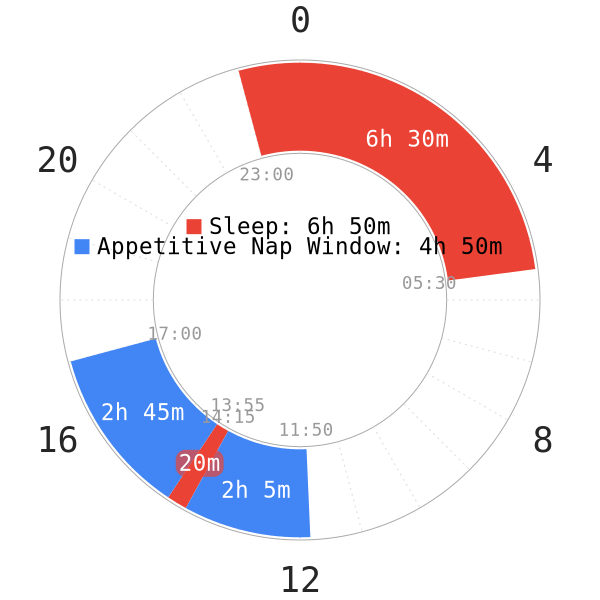
- People who have the natural ability to sleep during daytime without daytime sleepiness or being affected by notable sleep pressure3. These individuals can fall asleep rapidly and turn appetitive naps into actual naps. This gifted ability also helps them get some rest during emergency situations or when they do not follow any specific sleep patterns.
When it is a bad idea
- During the adaptation phase. Napping spontaneously outside the scheduled sleep times is an “oversleep” even if the sleeper is not tired. Thus, it is important to stick to the scheduled rigid sleep times as consistently as possible.
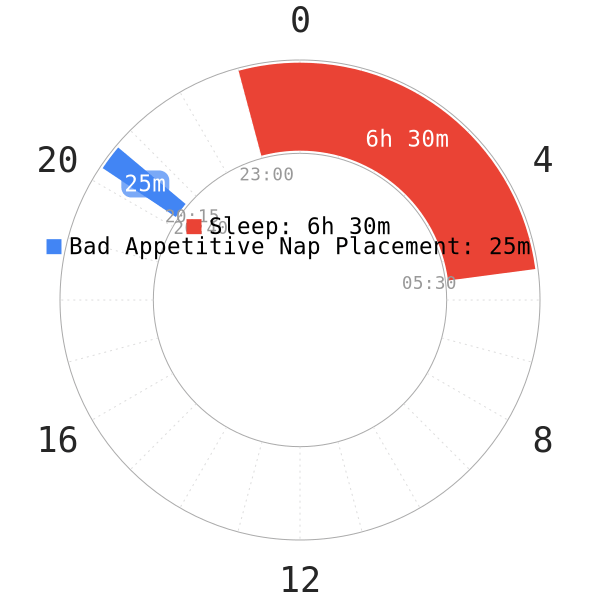
- Nap time is too close to the nocturnal core sleep. Even when new polyphasic sleepers who miss the daytime nap and want to nap later on, this is not recommended.
- Naps within 2-3h prior to the nocturnal sleep can clash with the Forbidden Zone of sleep. This would make the nap ineffective and not restful as it will contain mostly NREM1. If the sleeper falls asleep in this late nap, it can interfere with the core sleep via 2 ways. The nap can delay nocturnal sleep time or increasing sleep onset if the sleeper attempts to sleep at the regular hour.
Conclusion
Conclusively, appetitive napping behavior is a harmless yet useful practice to kick start polyphasic sleeping. This would help facilitate falling asleep in naps and a smooth transition into more advanced schedules. However, it seems to require correct timing in the day to actually make use of the appetitive naps.
Without sleep deprivation and homeostatic pressure, it is likely that the appetitive naps do not sustain alertness for as long as naps that contain deeper sleep stages. Naps where sleepers can get some actual sleep is still superior for more restorative values from deeper sleep stages. In this department, experienced polyphasic sleepers would enjoy appetitive naps more than inconsistent nappers or non-nappers.
Main author: GeneralNguyen
Page last updated: 2 April 2021
Reference
- Stampi, Claudio. Why We Nap : Evolution, Chronobiology, and Functions of Polyphasic and Ultrashort Sleep. Birkhauser, 2014.
- Evans, F. J., et al. “Appetitive and Replacement Naps: EEG and Behavior.” Science (New York, N.Y.);197(4304):687–689. doi: 10.1126/science.17922. [PubMed]
- Harrison, Y., & Horne, J. A. “High sleepability without sleepiness”. The ability to fall asleep rapidly without other signs of sleepiness. Neurophysiologie Clinique/Clinical Neurophysiology. 1996;26(1):15–20. doi:10.1016/0987-7053(96)81530-9 [PubMed]
